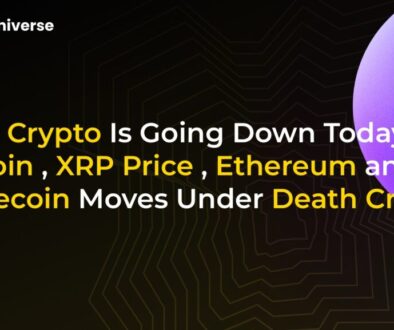Ferrari’s Bold Move into Cryptocurrency: A New Era of Luxury Ownership

Ferrari’s Bold Move into Cryptocurrency: A Ownership
The roar of a Ferrari engine is iconic, a symbol of unparalleled performance, exquisite craftsmanship, and extreme exclusivity. Now, that roar is echoing in the digital world. The legendary Italian automaker is accelerating into the Web3 space, announcing plans to launch a digital token that will allow an elite group of fans to own a piece of its celebrated 499P racing car. This isn’t just about accepting Bitcoin for a new Roma; it’s a fundamental exploration of what ownership means in the 21st century.
Ferrari’s decision raises a critical question for the entire luxury sector: Does embracing blockchain technology and tokenization enhance the allure of exclusivity, or does it risk diluting the very essence that makes a luxury brand desirable? Let’s dive into the mechanics of this groundbreaking initiative and explore its potential impact on the future of high-end collectibles.
What is Tokenization and Why is the Luxury World Watching?
Before we get into Ferrari’s specific strategy, it’s essential to understand the technology powering it: tokenization. In simple terms, tokenization is the process of converting rights to an asset into a digital token on a blockchain.
Imagine a priceless piece of art. Instead of one person owning it, you can divide its ownership into thousands of digital ‘shares’ or tokens. Each token represents a fractional stake in the artwork. This concept, known as fractional ownership, unlocks several possibilities:
- Increased Accessibility: High-value assets that were once unattainable for most become accessible to a wider pool of investors and fans.
- Enhanced Liquidity: Selling a fraction of a supercar is far easier and faster than selling the entire vehicle. These tokens can be traded on digital marketplaces.
- Provable Ownership: Blockchain provides an immutable and transparent record of ownership, reducing fraud and disputes.
For brands like Ferrari, this technology opens a new frontier for fan engagement, creating a community of stakeholders who are literally invested in the brand’s legacy.
Inside Ferrari’s Exclusive Hyperclub Initiative
Ferrari isn’t just dipping its toes in the water; it’s making a calculated dive. The initiative, developed in partnership with fintech firm Conio, is meticulously designed to maintain the brand’s hallmark of exclusivity while exploring this new digital landscape. This venture represents Ferrari’s
The project is targeted at the Hyperclub, a private network of just 100 of Ferrari’s most elite clients, all united by a passion for endurance racing. These select members will be the only ones eligible to acquire and trade the new digital tokens.
The crown jewel of this initiative is the tokenization of the Ferrari 499P, the very car that brought the Prancing Horse victory at the 24 Hours of Le Mans. Token holders will gain access to exclusive auctions, with the 499P being a prime asset. The official launch is slated to coincide with the 2027 World Endurance Championship season, marking a historic fusion of motorsport heritage and cutting-edge technology.
The Upside: Building a Deeper Connection
At first glance, making a Ferrari more accessible seems counterintuitive to its brand strategy. However, this move could be a stroke of genius. By offering fractional ownership, Ferrari isn’t just selling a car; it’s selling a verifiable piece of its racing history. This can:
- Strengthen Community: It transforms passive fans into active stakeholders, creating a tight-knit community with a shared financial and emotional investment in the brand’s success.
- Engage a New Generation: This initiative appeals directly to a younger, digitally native audience that values digital assets and community-driven experiences.
- Create New Revenue Streams: Tokenization unlocks new monetization models beyond simply selling cars, from trading fees to exclusive digital content for token holders.
The Downside: The Risk of Diluting the Dream
Every innovation carries risk, and Ferrari’s Web3 venture is no exception. The core challenge lies in balancing this new form of access with the tradition of exclusivity that luxury consumers cherish. If owning a Ferrari—even a tiny fraction of one—becomes commonplace, does it lose its aspirational magic?
Furthermore, the brand must navigate several potential roadblocks:
- The Technology Barrier: Many traditional luxury consumers are not crypto-savvy. A complex digital process could alienate this core demographic, making them feel excluded.
- Market Volatility: The crypto market is notoriously volatile. Tying a piece of the Ferrari brand to such a fluctuating market could introduce reputational risk.
- Security Concerns: The world of digital assets is rife with cybersecurity threats. A single high-profile hack could severely damage trust in the brand.
The Finish Line: A Test Drive for the Future of Luxury
Ferrari’s move into tokenization is more than just a marketing campaign; it’s a bold experiment that the entire luxury industry will be watching. By carefully curating the experience for its top 100 clients, Ferrari is mitigating the risk of brand dilution while testing the viability of a new ownership model.
The success of this initiative will depend on flawless execution. Ferrari must ensure the technology is seamless, secure, and, most importantly, enhances the feeling of being part of an exclusive club. If done right, it could pioneer a


